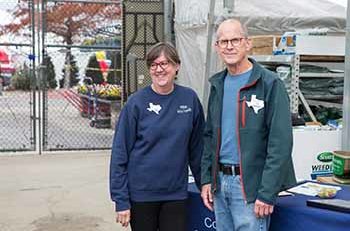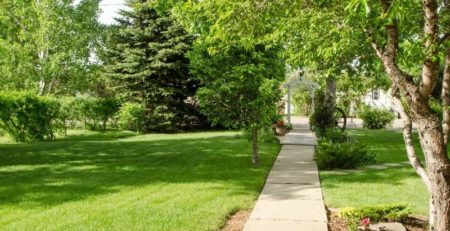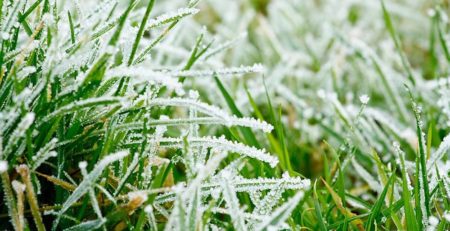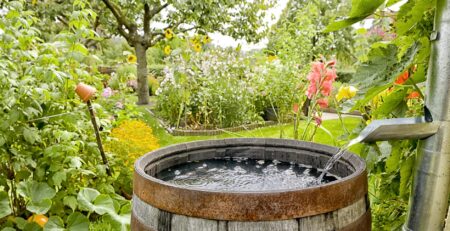Spring Weed Control in Lawns
Many lawns are now brown and dormant, but it won’t be long until the lawn, and the weeds, start greening up for the new year. If you have had a problem with weeds in the past, now is the time to get control.
Unfortunately, there is no magic bullet that will kill everything undesirable and give you a beautiful, weed-free lawn. Weed control is not a one-shot project. There are steps you need to take in the spring and steps you need to take in the fall. And you can crowd out many weeds by fertilizing, watering, and mowing your lawn properly throughout the growing season to develop a thick, healthy cover.
Once you decide to use a herbicide to control weeds, you may be bewildered by the array of products at your local garden center that promise weed control. It’s important to understand your options, to know what you can expect from various products, and to have realistic expectations for the results you can achieve. Find a garden center staffed by experienced horticulturists who can help you select products most suitable for your purposes.
Read the product label carefully before buying any herbicide and do a bit of homework so you can select the right product. Avoid so-called “weed and feed” products because herbicides and fertilizers need to be applied at different times during the year. Save your money and buy only the product you need.
Turfgrasses come in several varieties, and certain weed control herbicides will damage some varieties. It’s important to identify what variety of turf grass is in your lawn. Most lawns in our area are planted with warm-season grasses such as bermudagrass, St. Augustinegrass, or zoysiagrass. Warm-season grasses generally go dormant during the winter but flourish during spring and summer. Cool-season grasses like rye grass are used for color through the winter months but they die when warm weather arrives. Texas A&M AggieTurf provides online information about turfgrass identification that you can use to verify the type of turfgrass in your lawn. Buy a herbicide that your lawn can tolerate.
Identify the weeds you want to target and buy a herbicide that will control them. To help you identify your weeds, AggieTurf provides pictures of many weeds commonly found in Texas turf and describes the characteristics of three broad groups of weeds:
- Broadleaf weeds, like clover, dandelions, henbit, and spurges, have leaves of various shapes with a network of veins.
- Grassy weeds, like rescue grass and annual bluegrass, have long, narrow leaves with veins that run parallel to the edge of the leaf. They unmistakably look like grass.
- Sedges such as nutsedge or nutgrass are common in our area. They are often mistaken for grass, but they have a distinctive, triangular stem and a three-fold grouping of leaves on the main stem.
Herbicides come in two broad groups:
- Preemergence products interfere with germination and the early growth of weed seeds.
- Postemergence products are designed to be applied to established weeds.
Timing of herbicide application is important. Apply spring preemergence products when the soil temperature warms to 50–55°F, usually in mid-February to early March. Apply fall preemergence products when the soil temperature drops to 70°F. Measure soil temperature with a spike-type digital kitchen thermometer.
Understand that preemergence products do not kill established weeds. They only affect seed germination and early growth. Weeds like dallis grass are perennial and grow back year after year. Preemergence products will not affect this plant, although they can prevent new dallis grass seeds from germinating. To get rid of the established plant, dig it up with its roots or spot treat it with a postemergence product. Postemergence products work best on weeds that are young and actively growing.
Use only preemergence herbicides, not postemergence herbicides, to control grassy weeds in turf. Postemergence products that kill grassy weeds will also kill desirable grasses. Apply preemergence products when the targeted weeds are germinating. Most of our spring and early summer grassy weeds sprout from seeds during the fall and are best controlled using a fall application of a preemergence product. If you intend to overseed your lawn with rye or another cool-season grass, don’t apply a fall preemergence treatment. It will prevent germination and growth of the cool-season grass as well as the weeds.
Broadleaf weeds can be treated using either preemergence or postemergence products. Postemergence products are available for broadcast application and for spot treatment. Spot treatment may be less expensive if broadleaf weeds are not widespread. Be very careful using postemergence products. Products containing certain active ingredients (glyphosate, for example) will kill everything they contact, including weeds, turfgrass, and ornamentals. Make sure the product you select is safe for your turfgrass.
Always read the product label carefully to be sure it will kill the target weed and that it is safe for your turf variety. Avoid using herbicides on newly planted sod, over the root area of desirable shrubs and ornamentals (especially if they’re newly planted), or on lawns that have been recently seeded.
If you have questions about weed control or other aspects of lawn and garden care, contact the Dallas County Master Gardener Help Desk by email at dallasmg@ag.tamu.edu.












